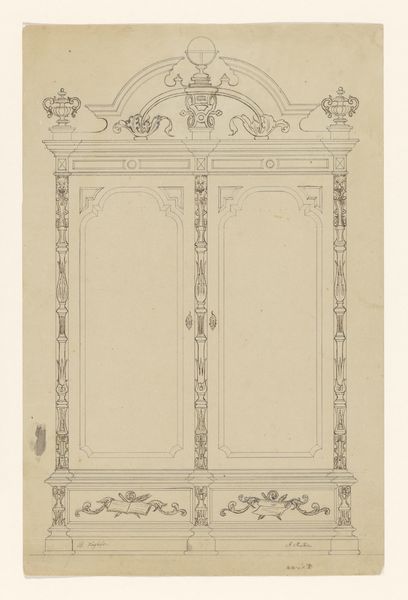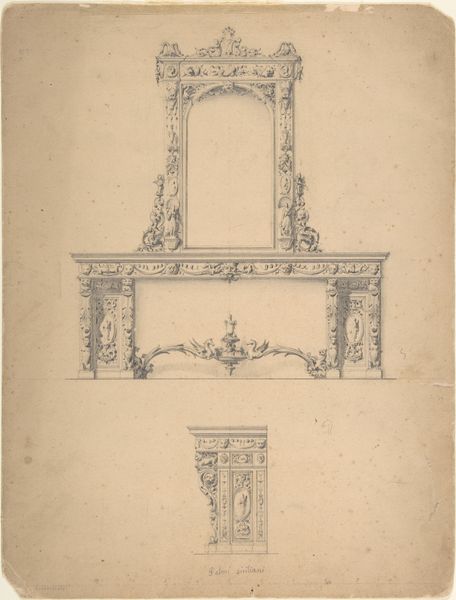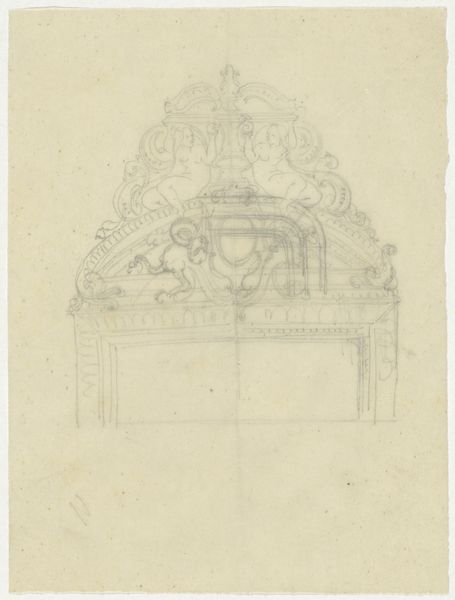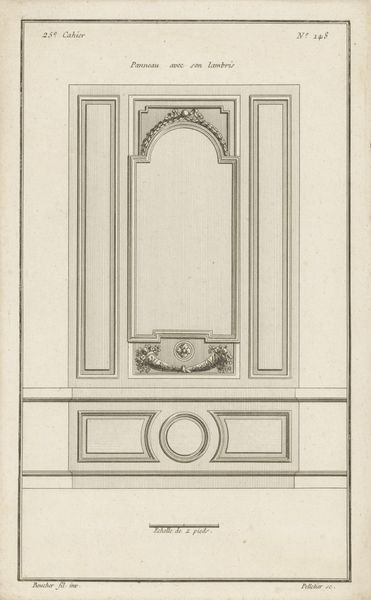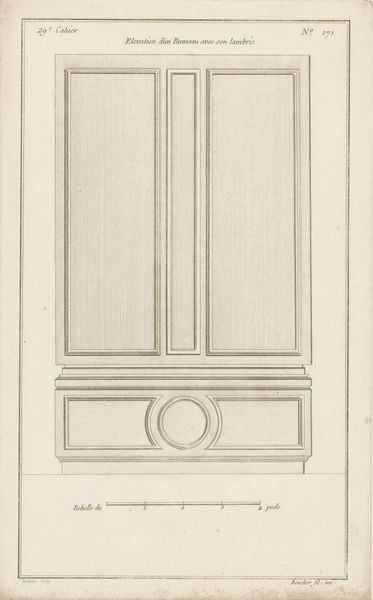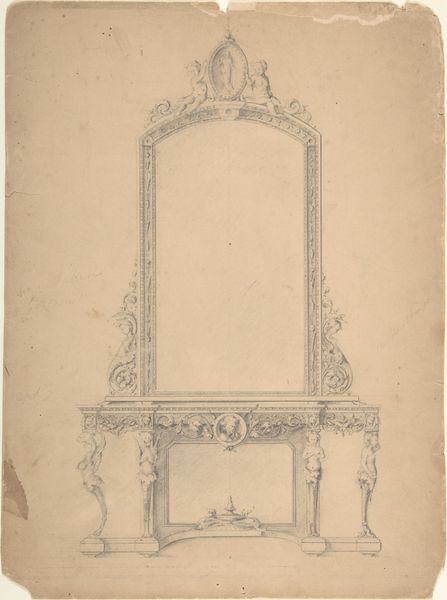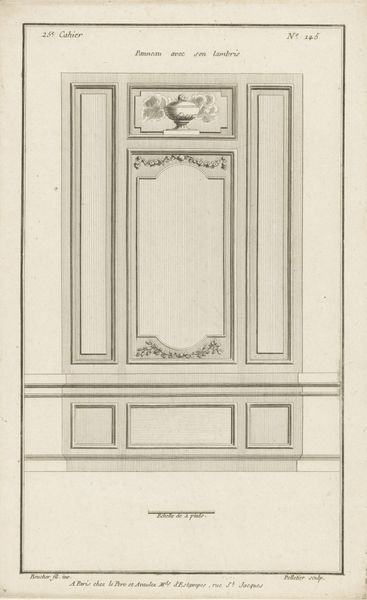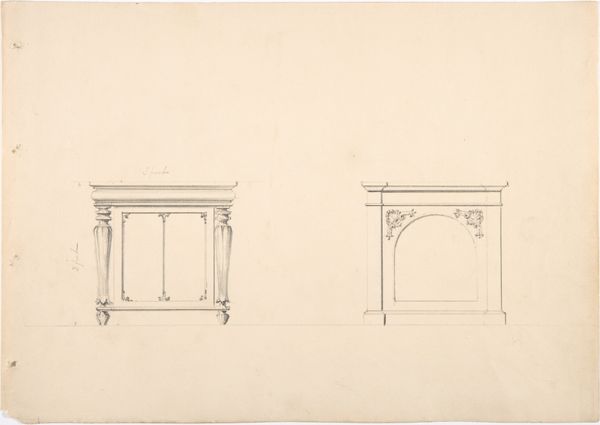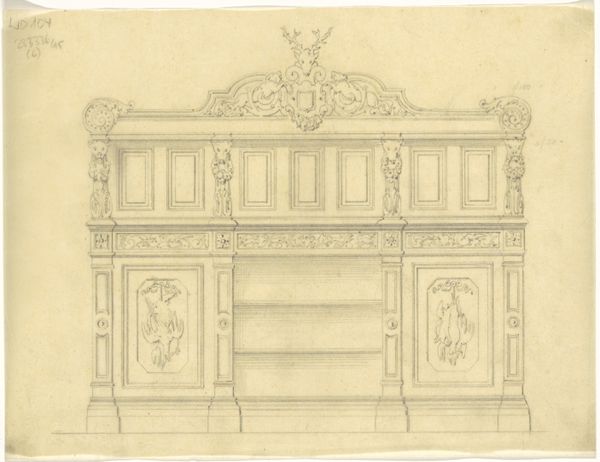
Ontwerp voor twee spiegels en een tafel, de rechter spiegel en de tafel met alternatieven voor rechts en links c. 1865 - 1870
0:00
0:00
drawing, paper, pencil
#
drawing
#
aged paper
#
toned paper
#
light pencil work
#
old engraving style
#
sketch book
#
etching
#
paper
#
form
#
personal sketchbook
#
geometric
#
pencil
#
line
#
sketchbook drawing
#
storyboard and sketchbook work
#
academic-art
#
sketchbook art
Dimensions: height 329 mm, width 247 mm
Copyright: Rijks Museum: Open Domain
Editor: This is Joseph Kusterer's "Ontwerp voor twee spiegels en een tafel, de rechter spiegel en de tafel met alternatieven voor rechts en links," created around 1865 to 1870. It's a pencil drawing on paper, seemingly a design proposal. It strikes me as a glimpse into the artistry involved in everyday objects. What stands out to you? Curator: What interests me most is how this sketch highlights the intersection of design, labor, and social context in the 19th century. Consider the materiality of these envisioned objects: wood, glass, perhaps even precious metals. Each requires specific skills to be extracted, processed, and transformed. How does this drawing reflect the labor practices that would have brought these items into existence? Editor: That's fascinating! I hadn’t thought about it in terms of the labor involved. It seemed more about aesthetics to me. Curator: Precisely! And isn't that disconnect revealing? The drawing aestheticizes the end product, often obscuring the material conditions that underpinned its creation. What can we infer about Kusterer’s intended clientele based on the design's elaborate ornamentation and symmetry? How does the accessibility, or inaccessibility, to those types of furniture reflect social standing in that historical period? Editor: I guess the ornamentation speaks to a wealthier clientele. The design is very ornate, a far cry from functionality or even something simple like Shaker furniture. So it really places the consumer within a specific economic bracket. Curator: Absolutely. Think of the woodworkers, glassmakers, and possibly even miners who supplied the raw materials. Their labor made such opulent design accessible only to the elite. By focusing on the materiality and the means of production of an object, we move beyond a purely formalist reading and uncover the complex relationships embedded within. Editor: I never would have considered that aspect of a simple sketch! Thank you! Curator: My pleasure! Examining the material world through the lens of art allows us to see everyday life, not as neutral, but as active processes.
Comments
No comments
Be the first to comment and join the conversation on the ultimate creative platform.
